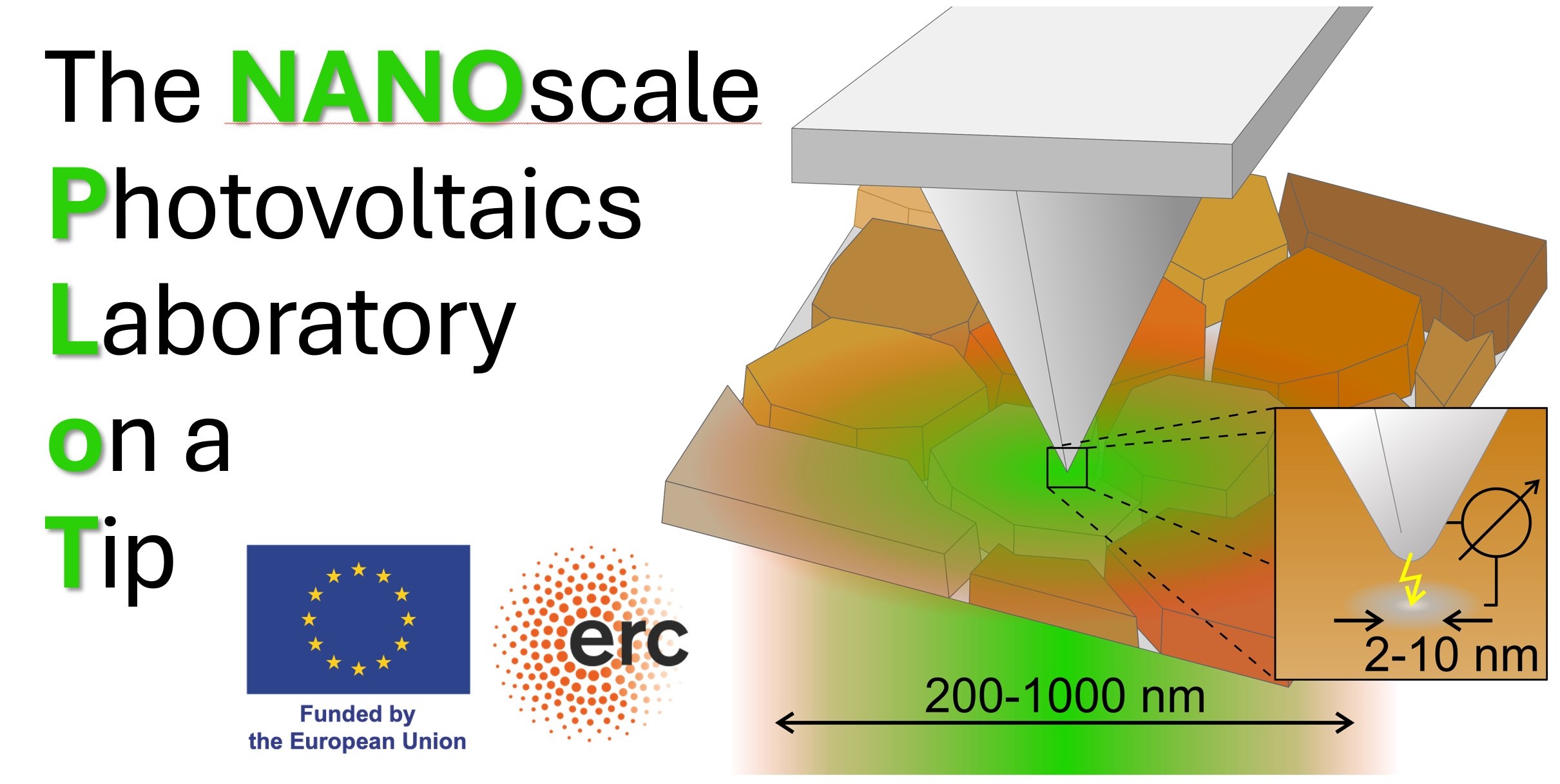
Next generation solar cells based on metal halide perovskite (MHP) materials promise cheaper and more energy-efficient photovoltaic and optoelectronic devices compared to current silicon-based technologies. To further advance MHP technology, however, will require fundamental understanding of processes leading to energy losses, unstable operation conditions and premature aging. The macroscopic properties of optoelectronic MHP devices are the result of the complicated interplay between structure and function. Thus, the key to understanding MHP materials is to look at the many nano- and microscale structures, from sub-granular twin domains, over grain boundaries and interfaces to lateral variations in crystal orientations and facets.
The aim of this project is to reveal fundamental nanoscale processes and explore the connections to the macroscopic properties of MHP materials. Therefore, we will develop NanoPLOT, an innovative microscopy platform combining the lateral resolution of state-of-the-art atomic force microscopy (AFM) with the high temporal and spectral resolution of ultrafast optical spectroscopy. NanoPLOT will not only allow spatially correlated mapping of, e.g., the local electron dynamics or photoemission spectra together with the nanoscale surface photovoltage, photocurrent or ion dynamics. The most exciting possibilities will come from entirely new imaging methods based on combinations of the available scanning probe and optical methods. Using the 2-10 nm wide AFM tip, we will address and excite individual nanostructures, enabling the characterization of optoelectronic properties at unprecedented spatial and temporal resolution. The new experimental capabilities will enable addressing some key challenges of MHP research, such as phase segregation and degradation effects, interface heterogeneity and strain effects, enabling a deeper understanding of loss mechanisms and intrinsic instabilities that will enable more efficient and stable MHP solar cells.
Further reading: